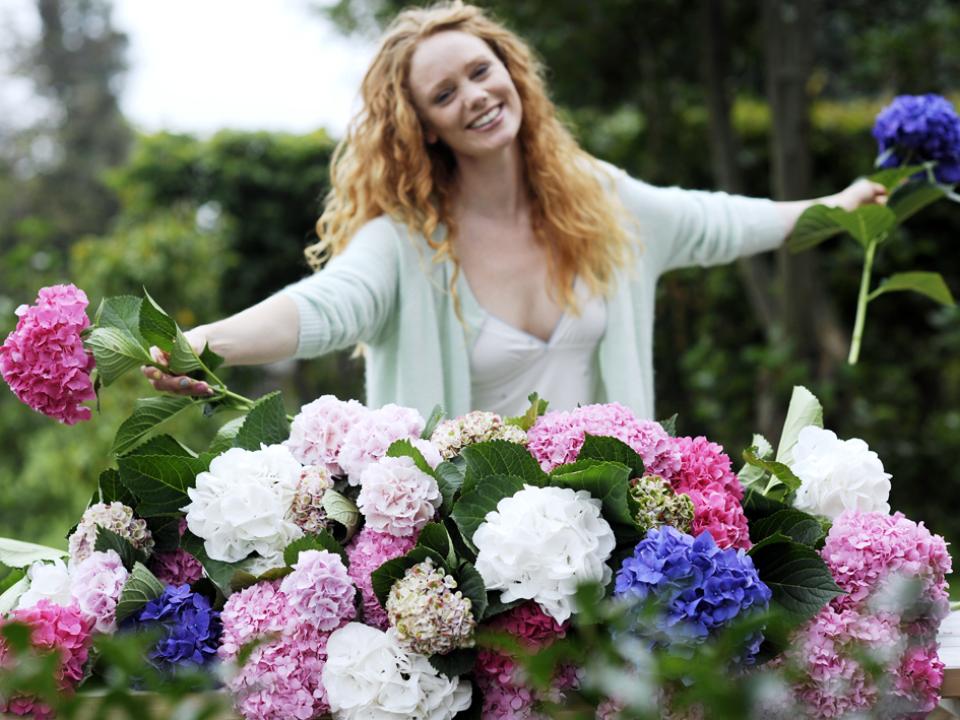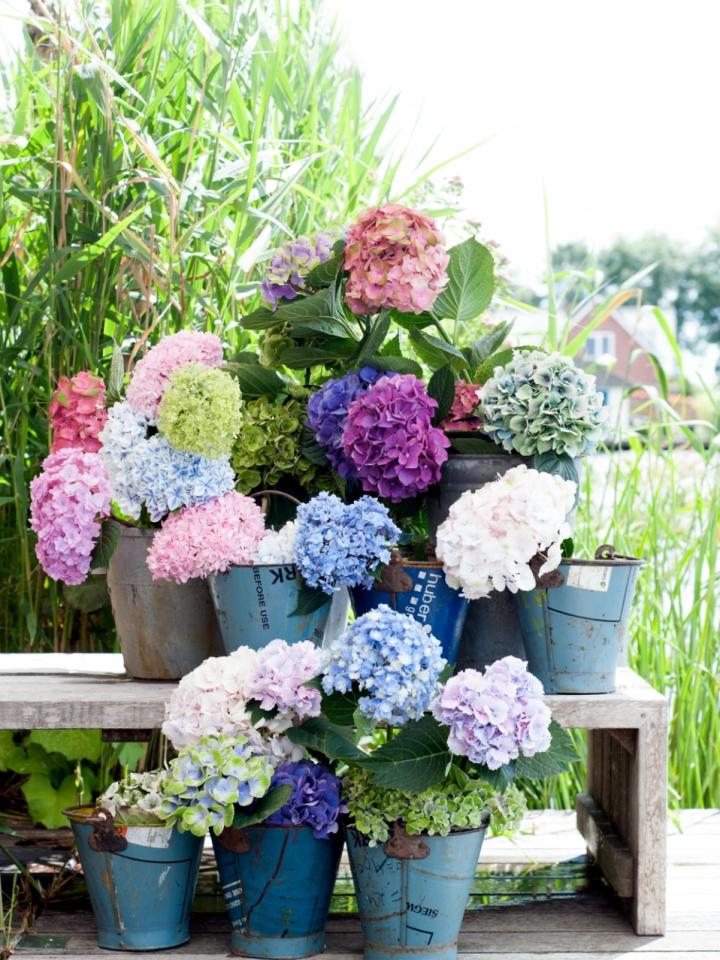Colour chameleon
Hydrangeas are available in an attractive choice of colours, from powder blue and lilac through violet and candy pink to white and pale yellowish green. But did you know that the colour your flowers are when they reach your vase or bouquet, they may well have started life a completely different shade? Yes, that’s right – those pretty blue flowers adorning your dining room table might once have been a distinctive shade of pink.
Meet the chameleon of the flower world
Magical as it may sound, it’s all a matter of chemistry: the colour of hydrangeas can be dictated by the acidity of the soil they’re grown in. If, for instance, your hydrangeas are a shimmery violet-blue colour, the chances are they were grown in acidic soil. This is because acid releases aluminium in the soil, which causes them to take on a blue hue. Soil with a pH of 5.2 to 5.5 will have this effect.

Pink hydrangeas will have been grown in alkaline soil with a high pH. Growers can therefore turn their pink hydrangeas blue by using organic mulch to acidify the soil, such as one made from pine bark, pine needles, sawdust, citrus peels, vegetable peels or coffee grounds.
So next time you’re adorning your home with blue hydrangeas, just think – they might have started out life pink! The same doesn’t apply to pale and creamy coloured petals though, so if you buy white flowers, you can rest assured they have always been that way.





